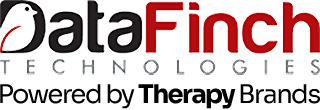The Journal of Organizational Behavior Management (“JOBM”) publishes articles promoting scientific research in Organizational Behavior Management. The most recent volume of JOBM included a particularly relevant research study titled, “The Effects of Electronic Data Collection on the Percentage of Current Clinician Graphs and Organizational Return on Investment.” Read a summary of the report and watch an interview with the author below.
Years of research have clearly demonstrated that early intensive behavioral intervention is the most strongly supported, evidence-based treatment for individuals with autism spectrum disorders. However, for such intervention to be effective, it is vital that clinicians use current and accurate behavior data to make treatment decisions. As the volume of behavioral services increases nationwide, collection and analysis of data becomes increasingly difficult, and unfortunately, the result may often be a decrease in the quality of data collection and subsequent utilization.
Electronic data collection (“EDC”) software, such as Catalyst, simplifies data collection and analysis, but for agencies with limited resources, software, hardware, and implementation efforts can be a daunting investment. Consequently, conducting a systematic evaluation to understand the potential costs and return on investment (“ROI”) of EDC is of upmost importance to organizational health. With this in mind, researchers Joshua D. Sleeper et al. (2017) formally evaluated the effects of electronic data collection on the consistency of data graphing and potential companywide ROI. The study was conducted over a period of twelve weeks at a large, multistate agency providing ABA services to individuals with autism. Catalyst was chosen as the electronic data collection software due to its popularity and commercial availability.
To measure effects on data graphing, fourteen clients were divided into seven pairs based on their age, types of treatment programming, hours of treatment, and location of services. The seven client pairs were assigned to three clinicians. The experiment began with a baseline phase in which session data were collected using paper and pencil methods and graphed using Microsoft Excel. At staggered intervals over the twelve weeks, EDC was used for one client in each pair, while the other client remained in baseline (paper and pencil data collection).
Every Friday at 5:00 PM PST, client graphs were checked to determine if they were “current,” which was defined as containing data collected from a session occurring in the past seven days. The results for clinician Susan and her three clients transferred to Catalyst were representative of the overall results. Before electronic data collection was implemented, 0% of Susan’s clients’ program graphs were current at the weekly check. After Catalyst was implemented, 100% of the client program graphs were current at the weekly check. That’s a 100% increase in current program graphs.
Constraints associated with regularly traveling to clients’ homes to obtain data and time spent transferring data to Microsoft Excel resulted in infrequently updated graphs by the weekly deadline. Catalyst immediately solved this problem because data collected via the mobile app were automatically synced and graphed in the web-based portal. Having access to consistently updated graphs also allowed clinicians to make timely, data-based, clinical decisions.
To evaluate potential companywide return on investment, working hours were tracked for five participating clinicians. Upon implementation of EDC, the average clinicians’ monthly average increased by about 4.25 hours, most of which were billable. That is, clinicians were spending more time analyzing data and making data-based treatment decisions for their clients, and less time transferring data from paper to a spreadsheet. The increase in reimbursable hours was used to calculate a projected increase in revenue over a five-year period. ROI was then calculated by subtracting the costs associated with EDC implementation from the projected revenue increase, dividing the difference by the projected revenue increase, and multiplying by 100%. Projections estimated the use of electronic data collection would generate a 59% return on investment in each of the first five years.
This analysis indicates Catalyst implementation increases profitability, offsetting associated costs, and allowing for investments in other initiatives to improve client outcomes, staff performance, and staff satisfaction. Moreover, clinicians had newly found hours to allocate towards crucial work activities such as program analysis, client services, or professional development activities. After participating in the study, therapists and clinicians completed a brief satisfaction survey which assessed preference for EDC compared to paper and pencil. The results indicated that 87% of team members preferred Catalyst or felt neutral about the trade-off with paper and pencil.
We’ve seen the positive impact Catalyst delivers, and now there is more scientific research to support it. If you are ready to make the switch, click the link below to experience Catalyst at no cost for 14 days.
Click Here For Your 2 Week Demo
Reference:
http://www.tandfonline.com/doi/full/10.1080/01608061.2016.1267065.
*Membership is required to access the full text, however the abstract exists publicly.
Share on Social
Share on facebook
Share on google
Share on twitter
Share on linkedin
